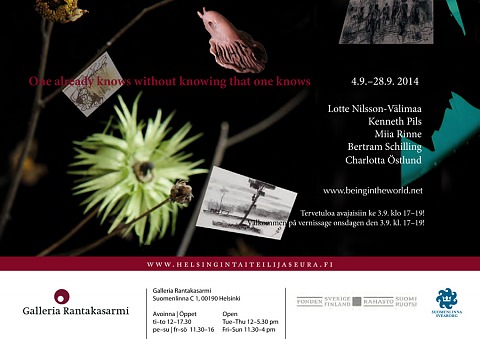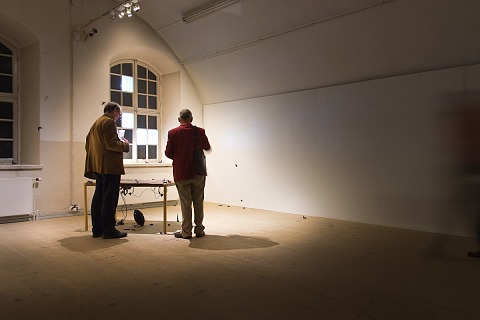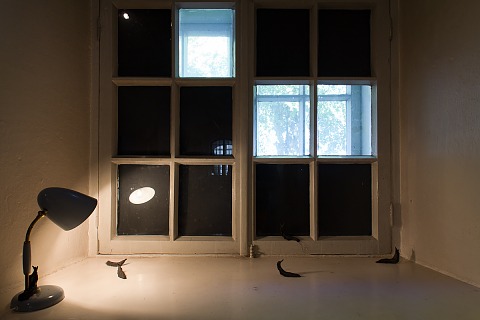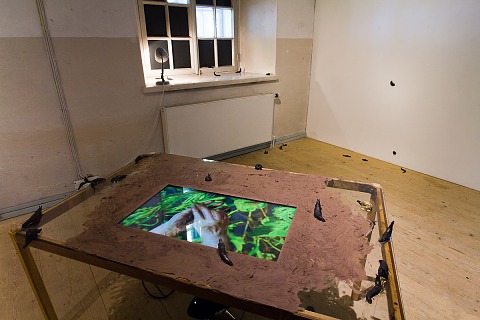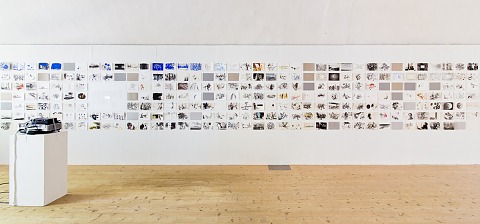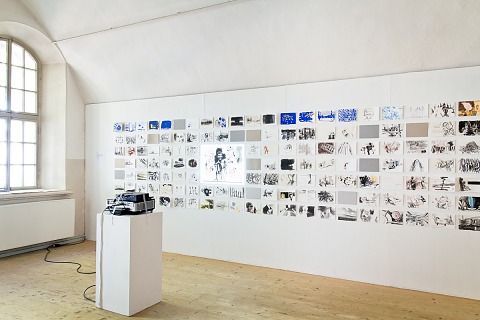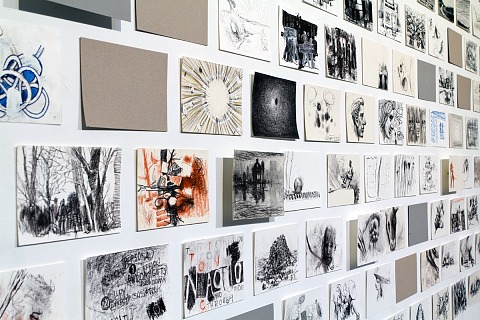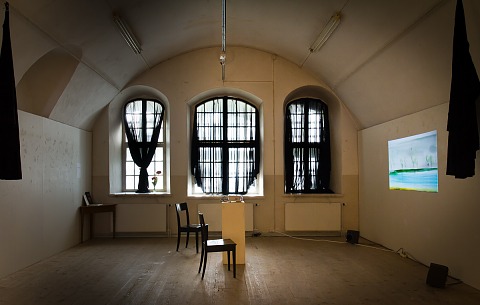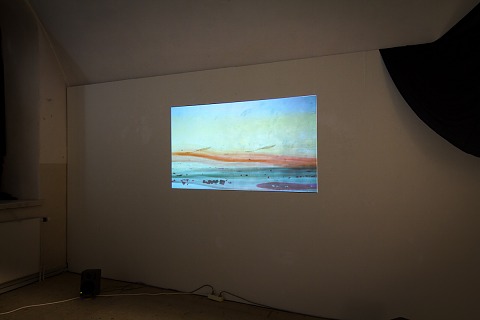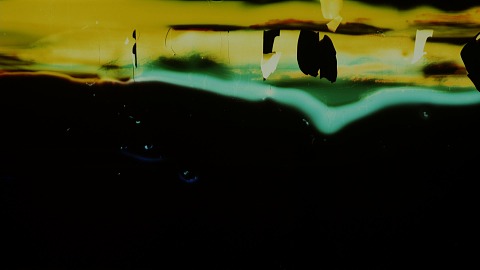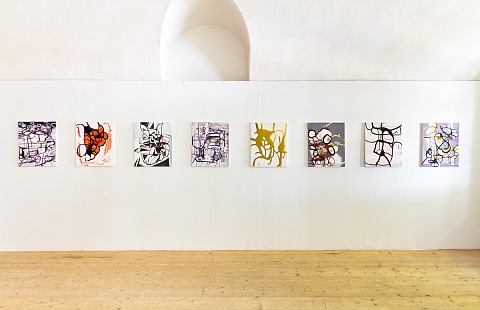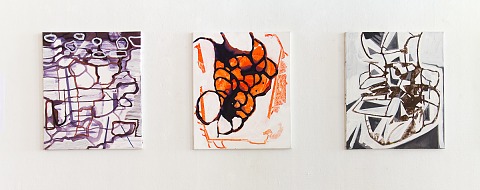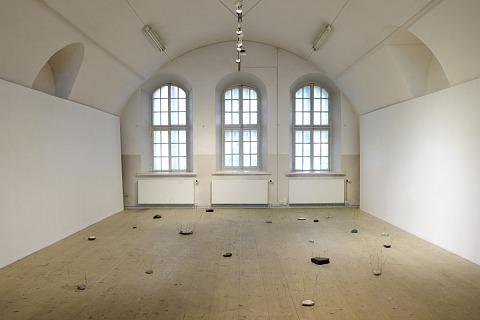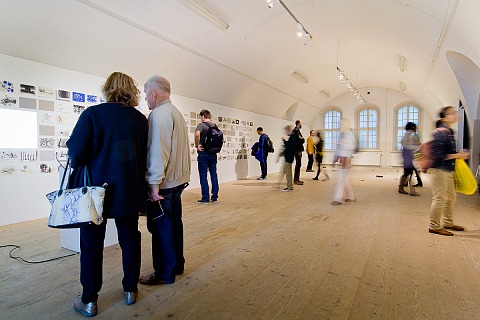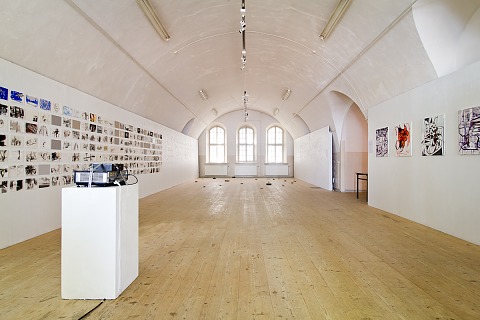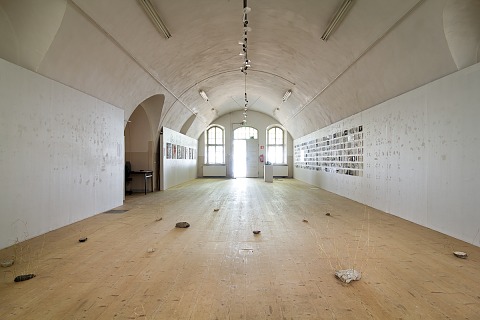One already knows without knowing that one knows - Part II
One already knows without knowing that one knows
Usein ajatellaan, että ihminen ei näe asioita ennen kuin hän tietää niistä jotain. Mutta mitä tällä tietämisellä
tarkoitetaan?
Näyttelyn lähtökohtana on ollut hiljainen tieto (tacit knowledge). Ihminen tietää enemmän kuin tietää tietävänsä, sillä vuosien saatossa kehoon kertyy tietoa ja ymmärrystä myös ilman tietoista oppimisprosessia. Tällaista käytännöllistä, kokemuksissa karttunutta, intuitiivista ja myyttistä tietoa on ihmisessä paljon, mutta sitä voi olla vaikea pukea sanoiksi. Hiljaista tietoa tarvitaan, sillä elämä on paljon muutakin kuin tietoista järkeilyä. Hiljaista on mm. ihmisen kyky tulla toimeen irrationaalisten puoltensa kuten halujen ja pelkojen kanssa. Se vierastaa kielen kaavoja, mutta vaikuttaa taiteessa.
Näyttelyn järjestää Being in the world –niminen taiteilijaryhmä, joka on perustettu Tukholmassa vuonna 2012. Ryhmään kuuluu joukko eurooppalaisia kuvataiteilijoita, kirjoittajia ja teoreetikkoja, jotka työstävät maiseman käsitettä laajassa merkityksessä.
////////// PÅ SVENSKA //////////
One already knows without knowing that one knows
En vanlig föreställning är att människor inte ser saker förrän de vet något om saken i fråga. Men vad är detta “veta något om”.
Vårt utställningstema är underförstådd (tyst) kunskap. “Tyst kunskap” förutsätter att man alltid vet mycket mer än man kan förklara. Ett helt fält av icke-diskursiv kunskap finns i våra liv, något som uppstått genom inlärning under åren utan att man varit medveten om inlärningsprocessen. Tyst kunskap inkluderar till exempel alla fysiska, intuitiva, mtologiskaoch erfarna kunskaper vi bär på. Saker vi vet men som är svåra att formulera i ord. Konsten att leva är i slutändan inte bara en plats för den resonerande delen av sinnet, viktigare är hur man handskas med de irrationella delarna av själslivet. Det handlar om rädslor och begär som undflyr vår rationella förmåga och kunskap men som inte undgår vår “tysta kunskap” och vårt praktiska konstnärliga arbete.
Utställningen är organiserat av gruppen ”Being in the world” [BITW]. Det är ett samarbete mellan konstnärer från
flera Europeiska länder. BITW grundades i Stockholm våren 2012 och kretsar kring landskapstemat i en vidare
mening av ordet landskap: dvs. att vara i, se ut över, relatera och anpassa sig till omvärlden.
////////// IN ENGLISH //////////
One already knows without knowing that one knows
It's often thought that people don’t see things until they know something about it. But what is this knowing about?
The topic of the exhibition is tacit knowledge. Tacit knowledge is silent: it implies that one knows all the time much more than one can ever tell. A body of nondiscursive knowledge exists; one’s life has taught it over the years, but it has been learned without any awareness of the process of learning. Tacit knowledge includes for example all the physical, intuitive, mythic and experience-based knowledge we bear and embody. These things we know but they are difficult to tell in words. The art of living is not ultimately a matter for the so-called reasoning part of the soul. Instead, important are one’s dealings with the irrational parts of the soul. These are fears and desires that escape the rational faculty and explicit knowledge, but maybe not tacit knowledge and the practice of artistic work.
The exhibition is organized by the collective “Being in the world” [BITW]. This collaboration between visual artists, writers and theorists from different European countries was founded in Stockholm in 2012. It revolves around the topic of landscape in a wider meaning of the word, that is: to be in, look out on, relate to the world.
Research resources
- Tacit knowledge (as opposed to formal, codified or explicit knowledge) is the kind of knowledge that is difficult to transfer to another person by means of writing it down or verbalizing it. Wikipedia
-
"I shall reconsider human knowledge by starting from the fact that we can know more than we can tell"
This writes Michael Polanyi in the work "The Tacit Dimesion" (1966) which is still is relevant today. His main theory is that all knowledge at it's core is personal and is built on tacit elements. - We can pick a face out of a million without being able to say how we did it. In this way, we are perpetually relying on operations within us which we neither control nor understand. In fact, over-awareness of what we are doing is the notorious cause of many accidents and foul-ups. Most daily actions betray a reliance on what Michael Polanyi calls the “tacit knowledge” of our bodies.
- Our minds must let go of the readiness to judge, he said, so that our eyes may be inwardly vulnerable to what we are seeing. Japanese champion of craft, Sōetsu Yanagi.

